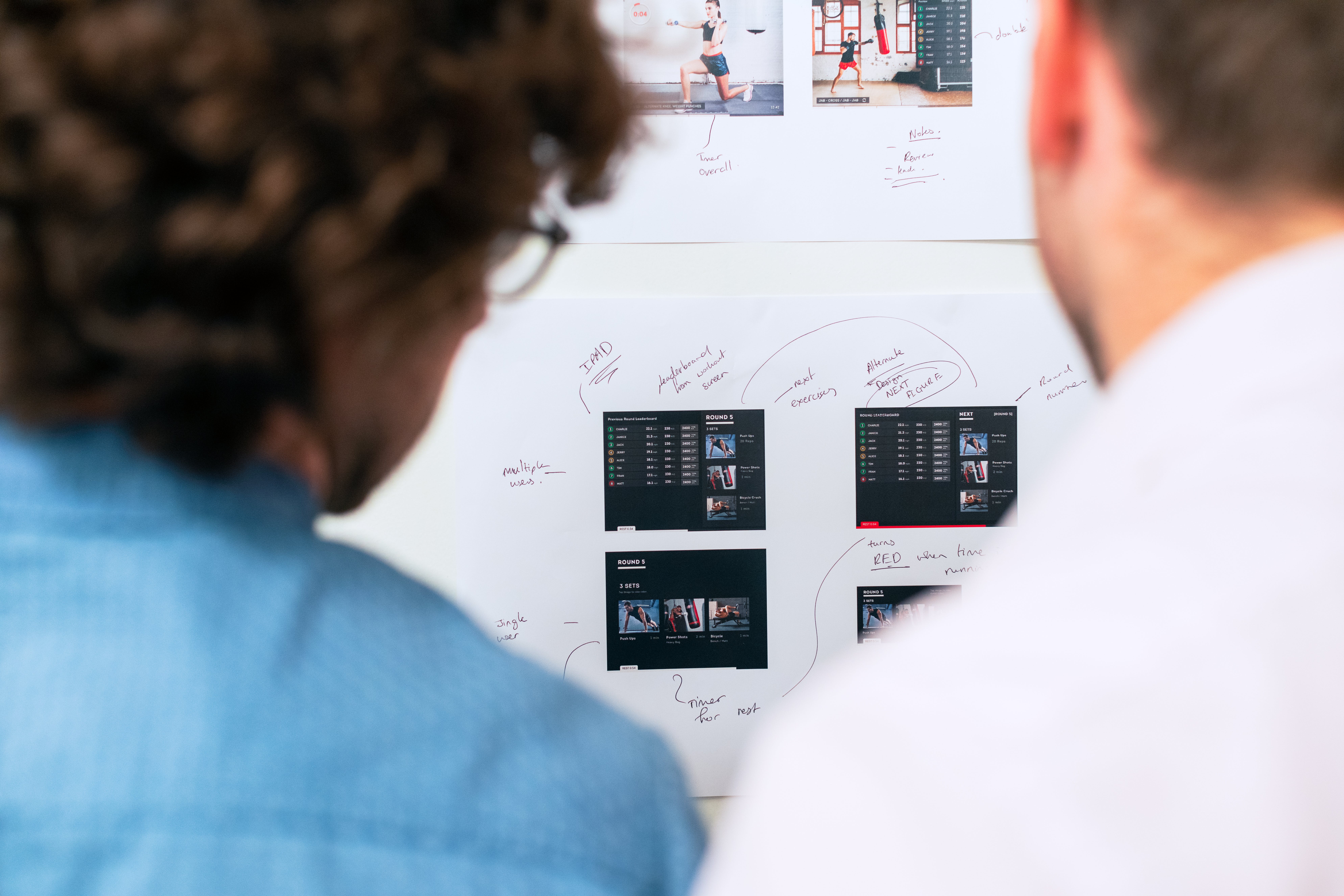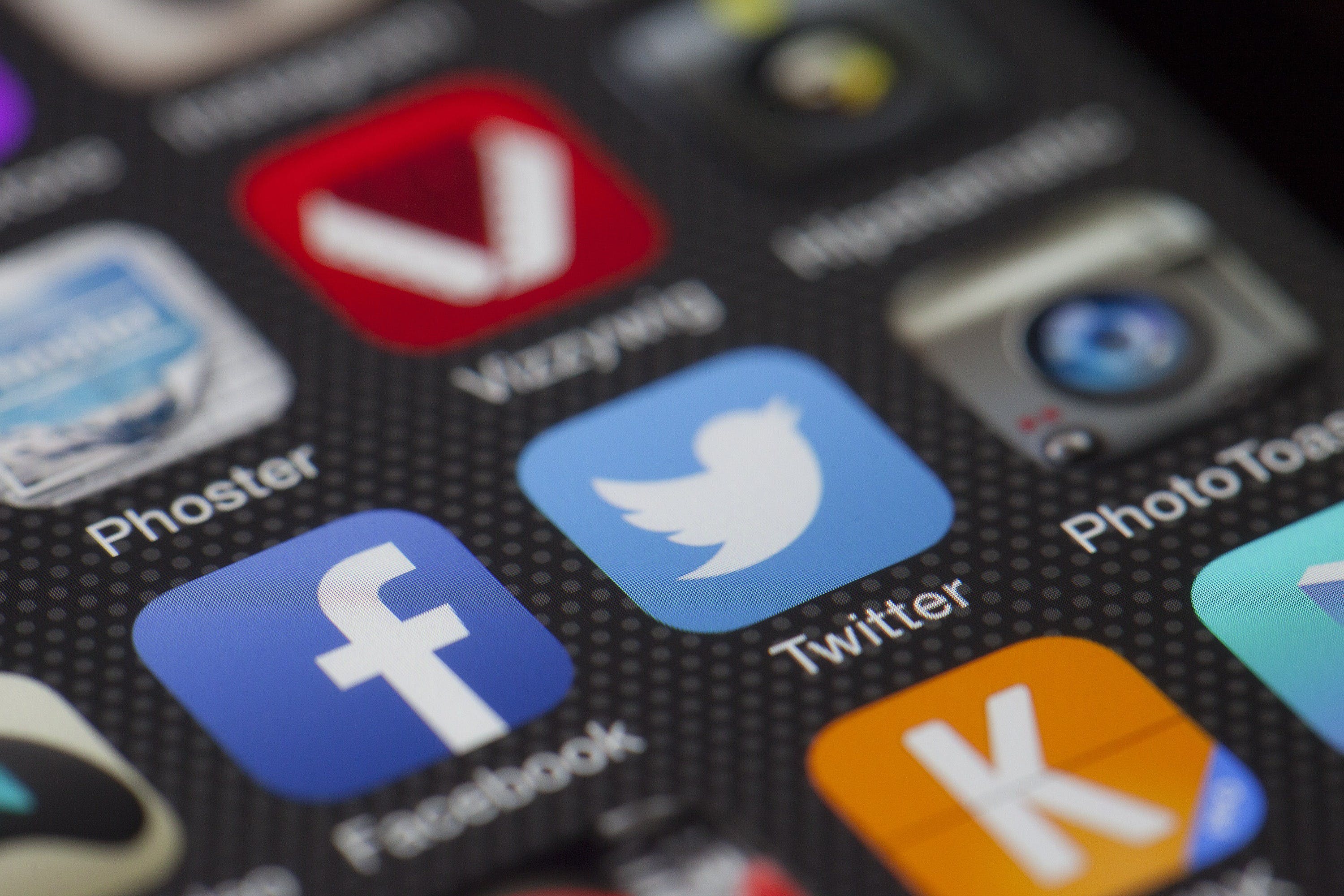Revolutionize IT: App Development at Its Finest!

Embarking on a journey through the vast and ever-evolving landscape of IT app development is akin to unveiling a new era of digital transformation. As businesses strive to stay ahead in the competitive market, the need for sophisticated, agile, and scalable applications has never been more pressing.



Our approach to IT app development is holistic, ensuring that each application is fine-tuned to our clients’ unique business requirements. We leverage the latest technologies, frameworks, and development methodologies to deliver applications that are robust, secure, and user-friendly. From streamlining business processes to engaging customers with intuitive interfaces, our applications serve as pivotal tools for growth and innovation.
Whether it’s harnessing the power of cloud computing, integrating artificial intelligence, or employing advanced data analytics, our team at Biz4Solutions is equipped to handle the complexities of modern IT app development. We understand the significance of staying at the cutting edge of technology trends and dedicate ourselves to providing solutions that not only align with current industry standards but also pave the path for future advancements.
Ready to transform your business with state-of-the-art IT app development? Connect with us at Biz4Solutions and let’s create something exceptional together.
Strategic Approaches to IT Application Innovation

In the realm of IT application innovation, strategic approaches are indispensable. Companies aiming for success must adopt a methodical and thoughtful plan to stay relevant and competitive. At Biz4Solutions, we understand that innovation is not a one-size-fits-all solution; it requires a tailored strategy that aligns with the specific goals and challenges of each business.
To commence, our experts conduct a comprehensive analysis of the current market and technology trends, ensuring the solutions we develop are not only advanced but also practical and sustainable. Iterative development is another key strategy that we employ. By using agile methodologies, we can rapidly prototype, test, and refine applications, ensuring that the end product is of the highest quality and functionality. This iterative process also allows us to incorporate feedback effectively, making sure that the applications evolve with the needs of the business and its users.
We also emphasize the importance of cross-functional collaboration. By involving stakeholders from various departments in the development process, we foster a holistic view of the business needs and create applications that truly resonate with the end-user. Furthermore, we focus on scalability to ensure that the applications can grow alongside the business, accommodating new users, increasing data volumes, and expanding functionality without a hitch.
By integrating these strategic approaches into our IT application innovation process, Biz4Solutions ensures that the software solutions we deliver are not only cutting-edge but also perfectly crafted to meet the ever-changing demands of the digital world.
Leveraging Cutting-Edge Technologies in App Creation

Leveraging cutting-edge technologies is at the core of pioneering app creation. At Biz4Solutions, we integrate state-of-the-art technological advancements to build apps that are not just functional, but revolutionary. Our team delves into the latest developments in the tech world to bring forth applications that set new benchmarks for performance, user experience, and innovation.
Artificial Intelligence (AI) and Machine Learning (ML) are two areas that have significantly transformed app development. By embedding these technologies, apps become smarter and more intuitive, capable of providing personalized experiences to users and automating complex processes. Similarly, the use of Internet of Things (IoT) technology allows apps to interact with connected devices, enabling a seamless flow of data and enhancing user engagement through real-time updates and notifications.
Cloud computing has also become a linchpin in modern app development, offering scalable infrastructure that supports the heavy lifting of data processing and storage. This ensures that apps can handle surges in user numbers without compromising on speed or availability. Moreover, Blockchain technology is increasingly being adopted for its unparalleled security features, which are crucial for apps dealing with sensitive information.
By keeping abreast of these technologies, Biz4Solutions not only crafts applications that are robust and reliable but also future-ready. Our commitment to leveraging cutting-edge technologies in app creation means our clients receive products that are at the forefront of the digital transformation era.
The Role of Custom Software in IT App Development
Custom software plays a pivotal role in IT app development, providing tailored solutions that meet the unique requirements of businesses. Unlike off-the-shelf software, custom applications are designed with a particular set of functionalities that align closely with the business objectives and operational workflows of the client. This bespoke approach ensures that the software perfectly fits into the existing ecosystem of the business, enhancing productivity and efficiency.
At Biz4Solutions, we understand that each business has its own set of challenges and opportunities. That’s why our custom software development services focus on creating solutions that are not just effective but also adaptable to the evolving needs of the business. Through a thorough analysis of the client’s requirements, we design and develop applications that provide a competitive edge by automating tasks, streamlining processes, and improving decision-making capabilities through data analytics.
Moreover, custom software is integral in ensuring that the specific compliance and security standards of an industry are met. Tailor-made solutions can address these concerns by incorporating the necessary protocols and features that are essential for the business to operate within the regulatory framework.
In IT app development, the role of custom software cannot be overstated. It is the difference between adopting a generic tool and having a powerful ally that is built to propel the business towards its strategic goals. For businesses looking to maximize their potential, custom software development is the key to unlocking unprecedented levels of innovation and performance.
Optimizing User Experience in IT Applications

Optimization of user experience (UX) is a crucial factor in the success of IT applications. It revolves around creating applications that are not only functional but also intuitive and engaging for the user. A superior UX design ensures that users find the application easy to use, which in turn, increases adoption rates and user satisfaction. In today’s competitive digital landscape, applications with a seamless and enjoyable user experience stand out and retain users more effectively.

At Biz4Solutions, our commitment to optimizing user experience is reflected in our meticulous design process. We prioritize user feedback and employ advanced UX design principles to create applications that are user-centric. By conducting thorough user research and usability testing, we identify pain points and preferences which guide the design of the user interface (UI). This process ensures that the final product is not only aesthetically pleasing but also functional and accessible to users with varying levels of technical proficiency.
Furthermore, the optimization of user experience goes beyond the visual layout of the application. It includes enhancing the performance of the application, reducing load times, and ensuring that the application is responsive across different devices and platforms. Our developers work diligently to optimize the codebase, employ efficient algorithms, and leverage the latest technologies to achieve a fluid and responsive UX.
By integrating these UX optimizations into IT app development, businesses can ensure that their applications not only meet but exceed user expectations. This focus on user satisfaction is a key driver of user engagement and loyalty, which ultimately contributes to the application’s success and the business’s bottom line.
Achieving Business Growth Through IT App Solutions

Embracing IT app solutions is a transformative strategy for businesses aiming to achieve substantial growth. The integration of custom software development into business operations can be a game-changer, offering enhanced efficiency, improved customer relations, and a significant competitive advantage.
At Biz4Solutions, we specialize in creating customized IT app solutions that are tailored to the unique needs of each business. Our solutions are designed to streamline processes, automate tasks, and provide insightful data analytics that empower decision-makers. By leveraging state-of-the-art technology, our applications help businesses to operate more effectively, reduce costs, and increase productivity.
Moreover, IT app solutions provide an invaluable platform for businesses to interact with their customers. Through personalized user experiences and robust customer service tools, businesses can foster stronger relationships with their clientele, which is essential for long-term growth. By making strategic use of IT app development, companies can not only retain their existing customer base but also expand their reach to new markets.
Discover how Biz4Solutions can energize your business growth with innovative IT app solutions.
Ultimately, IT app solutions are not just about keeping pace with the digital world; they are about leading the charge in innovation and setting new standards in operational excellence. As a partner for growth, Biz4Solutions is committed to helping businesses harness the power of technology to achieve their vision and objectives. Our expertise in IT app development is the catalyst for transforming ambitious goals into reality, ensuring that our clients stand out in their respective industries.
Elevate your business trajectory with Biz4Solutions’ bespoke IT app development services.
In IoT, a Device is Known as What? Unveiling the Answer!

Embarking on the journey of understanding the Internet of Things (IoT), it’s crucial to become familiar with the terminology that defines this innovative tech landscape. In an IoT environment, a device is not just a simple gadget; it’s an integral component of a much larger ecosystem. These devices are often referred to as “smart” devices or “connected” devices due to their ability to communicate with other devices and systems over the internet.
Smart devices range from everyday household items like thermostats and refrigerators to sophisticated industrial sensors and actuators. What makes them ‘smart’ is their capability to collect data, analyze it, and take action based on insights gained from that data. Similarly, connected devices are so named because of their connectivity to other devices and the cloud, allowing them to send and receive data, thereby creating a network of objects that work together seamlessly.
The term ‘thing’ in IoT can be any physical object that has been equipped with sensors, software, and other technologies for the purpose of connecting and exchanging data with other devices and systems via the internet. These devices are the building blocks of an IoT ecosystem, enabling enhanced efficiency, and providing valuable insights into user behavior and system performance.
The Role of a ‘Thing’ in Internet of Things Environments

The term ‘thing’ in the realm of IoT embodies a pivotal role that goes beyond the traditional concept of a device. In an IoT environment, a ‘thing’ can be any object, whether a household appliance, a vehicle, a building, or even a piece of machinery on a factory floor, that is equipped with embedded systems, electronics, software, and sensors. These components enable the ‘thing’ to collect, send, and receive data, thereby facilitating a deeper layer of automation and intelligence across various sectors.
Each ‘thing’ serves as a node in the larger IoT network, contributing to the massive data exchange that fuels smarter decision-making and operational efficiency. For instance, in a smart home setup, a ‘thing’ could be a light bulb that adjusts its brightness based on the time of day or the presence of people in a room, significantly enhancing user comfort and energy efficiency. In industrial settings, a ‘thing’ could be a sensor monitoring equipment temperature, helping to predict maintenance needs and prevent downtime.
Furthermore, the integration of these ‘things’ facilitates the emergence of smart cities, healthcare advancements, and optimized agricultural practices, among other applications. The data collected by these devices enable predictive analytics, which can lead to proactive solutions and a more responsive environment. This interconnectivity is not only revolutionizing the way we interact with the physical world but also how industries operate, innovate, and provide services to customers.
Understanding the diverse roles of a ‘thing’ in IoT environments is essential for businesses looking to leverage this technology to create value and achieve competitive advantage in their respective domains.
How IoT ‘Smart Objects’ are Revolutionizing Connectivity

IoT ‘smart objects’ are at the forefront of a connectivity revolution, redefining the way we interact with the digital and physical worlds. These objects, embedded with sensors, software, and network connectivity, have the capacity to collect and exchange data without requiring human-to-human or human-to-computer interaction. This seamless exchange of data is what makes these objects ‘smart’, and it is changing the landscape of various industries by introducing unprecedented levels of automation, efficiency, and customer service.
The hallmark of these smart objects is their ability to communicate autonomously through the internet, which enables remote monitoring and management. For example, in the healthcare sector, smart medical devices can continuously monitor patient vitals and send alerts to medical staff if abnormalities are detected. This not only enhances patient care but also optimizes the workflow of healthcare providers.
In the realm of home automation, smart thermostats learn user preferences over time and adjust heating or cooling systems for optimal comfort and energy savings. Similarly, smart locks and security systems provide homeowners with peace of mind by allowing them to monitor and control their homes from anywhere in the world.
The proliferation of smart objects is also paving the way for smarter cities. These connected devices contribute to efficient traffic management, waste management, and energy distribution, leading to more sustainable urban environments. As businesses incorporate smart objects into their operations, they are able to gather rich insights through data analytics, enabling them to make more informed decisions and offer personalized experiences to their customers.
Ultimately, the revolution brought about by IoT smart objects marks a transformative era of connectivity, where the boundary between the physical and digital spheres is increasingly blurred, ushering in a new wave of innovation and opportunity.
Identifying IoT Components: The Significance of Device Nomenclature

In an IoT environment, a device is also known as a/an ‘thing’ or ‘smart object,’ and understanding the nomenclature is crucial for comprehending the ecosystem’s complexity. Identifying components within the IoT landscape goes beyond mere naming; it is about recognizing the role each element plays in the interconnected network. Devices in IoT act as the primary data sources, collecting information from their environment through sensors and initiating actions through actuators.
These ‘things’ are the endpoints of an IoT system, and they can range from simple temperature sensors to complex industrial machines. The specificity of the term used for an IoT device often gives insight into its functionality. For instance, a ‘smart meter’ implies a device that not only measures energy consumption but also communicates this information for further analysis or remote monitoring.
The significance of device nomenclature in IoT also extends to the standardization of communication. As the number of connected devices skyrockets, having a common language to describe these devices ensures interoperability and helps in the integration of various systems and platforms. This is particularly important when considering the vast array of industries IoT touches upon, from agriculture to manufacturing, and from smart homes to smart cities.
Furthermore, a well-defined nomenclature facilitates better documentation and knowledge sharing among developers, manufacturers, and end-users. It simplifies the process of identifying compatible devices and services, which is essential for the development, deployment, and scaling of IoT solutions. Moreover, it aids in setting benchmarks for security protocols, as the identification of each device type can determine the level of security required to protect it from potential threats.
Therefore, device nomenclature in IoT is more than just a label; it is a foundational element that promotes clarity, efficiency, and security within the burgeoning world of interconnected devices.
The Evolution of IoT Devices: From Simple Sensors to Intelligent Actuators
The landscape of IoT has witnessed a remarkable transformation, evolving from rudimentary sensors to sophisticated, intelligent actuators capable of complex decision-making processes. Initially, IoT devices were primarily simple sensors that collected data points for analysis. These sensors served as the eyes and ears of the IoT environment, capturing a wide array of information ranging from temperature to motion, and from humidity to light intensity.
As technology advanced, these sensors became more adept at not only collecting data but also processing it to a certain extent. This evolution marked the transition from passive data logging to a more active role in the IoT ecosystem. The introduction of microcontrollers and onboard processing capabilities allowed these devices to perform preliminary data analysis, reducing the latency and reliance on cloud or central servers for every computational task.
The current generation of IoT devices embodies an even greater level of intelligence, with actuators playing a pivotal role. Actuators, unlike their sensor counterparts, have the ability to effect change in the physical world. They can execute commands based on the data received and processed, such as adjusting the temperature in a smart thermostat or controlling the speed of an industrial conveyor belt.
Intelligent actuators are now outfitted with machine learning algorithms, enabling them to learn from patterns and make autonomous decisions. This leap in capability allows for real-time adaptation and optimization of operations, which is particularly beneficial in dynamic environments. The synergy between sensors and actuators represents the pulse of the IoT, empowering devices to not only monitor their surroundings but also to interact with them in increasingly sophisticated ways.
The evolutionary journey of IoT devices underscores a shift towards autonomy and intelligence, where devices are equipped with the capabilities to not just collect data, but to analyze, learn, and act upon it, heralding a new era of smart technology integration.
Future-Proofing Business: The Impact of IoT Device Integration

Embracing IoT technology is a strategic move for businesses aiming to remain competitive and future-proof their operations. The integration of IoT devices into business processes has a profound impact on efficiency, scalability, and data-driven decision-making. By leveraging IoT, companies can automate tasks, monitor equipment health in real time, and gain insights that lead to improved products and services.
For instance, manufacturing businesses can harness IoT for predictive maintenance, using sensors to detect potential equipment failures before they occur, thus minimizing downtime and reducing repair costs. Retailers can utilize IoT to enhance customer experiences, such as by employing smart shelves that automatically monitor inventory levels and provide insights into consumer behavior.
Moreover,the data collected by IoT devices is invaluable, as it offers a granular view of operations and consumer interactions. When analyzed properly, this data can uncover trends, optimize resource allocation, and drive innovation. Businesses that integrate IoT solutions position themselves at the forefront of their industry, capable of adapting to market changes and consumer demands with agility and foresight.
As Biz4Solutions, we recognize the transformative potential of IoT and are committed to providing our clients with robust IoT solutions that catalyze growth and efficiency. Our expertise in custom software development ensures that IoT integration aligns perfectly with your business goals, creating a seamless ecosystem that propels you into the future.
Ready to elevate your business with IoT innovation? Visit Biz4Solutions and discover how our cutting-edge technology services can turn your IoT aspirations into reality.
